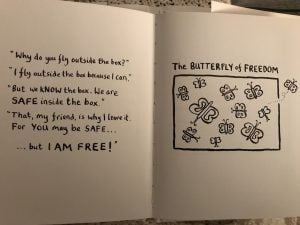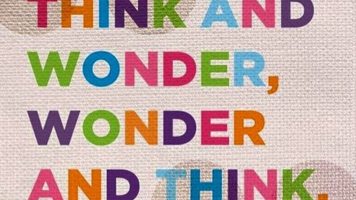I was introduced to Sonia Choquette’s work in 2017 while at Mind Valley University in Barcelona. An analytical and practical thinker, I stayed for her workshop with some cynicism. Her workshop was about learning to get out of your head. Something, that most of my friends and family will attest to, I struggle to do at times.
Sonia spoke of the left brain, where we focus on thinking, facts, tasks as the “bad neighbourhood”. Somewhere you go to do what you need to, then get out. You don’t live in the bad neighbourhood. The right brain is the space that allows creative thinking and exploration.
Over the course of the session with Sonia, I felt myself being drawn into her world, into her idea of living more creatively. Tapping into to the freedom of not knowing. By the end, I felt that I had drunk her magical cool-aid and my mind began to wonder… had I been living in the bad neighbourhood?
My mind was always focused on data, the practical, and tapping into what I knew. While I was able to be creative and work in a more creative way when I needed to, I felt comfortable with the structure of data and analytics. For me, creativity was the bad neighbourhood; one that I would go to when I had a task to complete, returning to the land of analytics when done.
The magic of wondering
In addition to a great movement exercise, it was Sonia’s comments about wondering vs. thinking that resonated the most. Something that I now share with friends and clients alike now.
Over the following weeks and months, I began to realise that I had created a construct of how I thought I should live, what I thought I should be doing and what I believed to be right. This had extended to most aspects of my life. Yet all of a sudden, I began to wonder, and my conversations became about “what if?” and “yes and…”.
When we think about what needs to be done, we are confined by our conscious thoughts and beliefs. In doing so, we inadvertently place limitations on what we can do based on our experiences, our learnt behaviours our knowledge. Often called limiting beliefs, our understanding of “what is possible” becomes constrained to essentially, what we remember or what we are told.
Wondering creates space and openness

Since my time in Barcelona, I have sought to eliminate the word think when looking at opportunities and possibilities, and where possible replace it with wonder. In doing so, I have removed limitations that I had unconsciously created, and I now see new possibilities, new opportunities in everything.
In a recent L&D Mastermind where we discussed Design Thinking, I noted the importance of wondering when undertaking the ideation phases. When we stop thinking and start wondering, ideas flow and innovation is born.
Take a moment to think about something; perhaps what you can cook. Does your mind start cataloguing what you know? The information that you have seen or read; what recipes your mother, father, grandparents shared.
Now, take a moment to wonder. Does your mind open up? Does the space in your mind expand to include things you know nothing about? The beef bourguignon you had on holiday, the amazing desserts of Adriano Zumbo or something that you’d never have thought of.
Wondering requires daily practice
As an ex-die hard analytic and process bunny, wondering required daily practice. However, I now find wondering part of my daily life. The space wondering has created has enabled me to work more effectively with clients and heightened my ability to envision solutions and create new opportunities, and has enhanced my love of process and structure.
My daily practice combines learning with regular journaling and planning my week. Combining my need for structure with my desire to create more space in my life to grow.
I invite you to wonder more.




